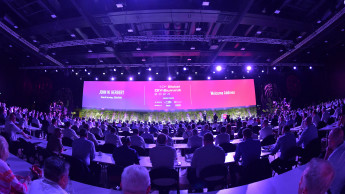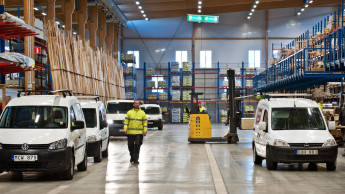
deep insights, facts & figures
14.07.2009
There are three vital factors affecting retailing today: the economy, the housing market, and shifting consumer attitudes and demands
Speaking at the 2009 National Hardware Show, Steve Frawley, president/CEO of The Emery Waterhouse Co., a Maine wholesaler, said retailers must adapt to changing buying habits, brought about in part by the recession but also by changing lifestyles. He warned that the world "will not return to the way things were." Partly due to the recession, but also the result of burgeoning populations, crowded cities and a harried life, consumers now want a retail experience that is more personalized, he said. It is one way for them to retain a bit of their own freedom in a world of "mass" - mass transit, mass marketing, mass populations. Retailers who are able to be flexible and quickly adapt to changing products, changing demands and changing customers will survive in recessionary times and thrive in normal times in the future, he explained. This means understanding customers better, while providing employees with more training so they improve their product knowledge in order to help customers and be able to establish personal relationships with them. One proof that consumers are seeking a closer personal relationship with retailers, he said, can be found in the fact that consumers are spending 20 per cent less time shopping in retail centres, especially malls, than in 2001. In America this has resulted in the closing of some large malls and the departure of major anchor stores from many others. Stand-alone or smaller stores know they must provide better service since they cannot rely on browser traffic. He also pointed out that economic conditions are causing consumers to cut back on major home projects, but are stimulating home repair and maintenance projects. Retail giants like Home Depot and Lowe's, more dependent on big-ticket sales, are feeling this cutback more than local hardware stores, whose business has always been more repair-oriented. People are shopping closer to home in many categories, recognizing that time itself has a value. Higher gasoline costs also accelerate this trend. It is becoming fashionable in many communities to focus on "shopping locally", he emphasized. In addition, there is a return to DIY (do-it-yourself) from BIY (buy-it-yourself), as consumers decide to do the work themselves, rather than have it done for them. All these factors, he explained, require a different retail attitude. He issued a challenge in closing: "Don't waste this crisis." Green retailing today If you, as a retailer, are not giving some serious attention to "green" retailing issues, you will be in danger of losing some sales now and increasingly so in the future. Recent surveys of American consumers, which might also reflect consumer attitudes elsewhere, show that a majority of consumers feel that protection of the environment is a growing concern. In fact, 46 per cent say it is "somewhat important" that stores sell green products, while 30 per cent consider it "extremely important". This doesn't mean you have to be a 100 per cent green retailer, or that you have to offer eco-friendly products in every category, speakers said at a seminar conducted during the 2009 National Hardware Show. But hardware stores and home centres have the opportunity to make sales and support green issues by emphasizing products they carry which reduce energy costs and usage, such as fluorescent light bulbs instead of incandescent ones, or water-saving toilets, faucets, etc. It's important for retailers to understand that price is not quite so important when selling green products. VOC paint products, for example, cost more but are selling because they are more environmentally friendly. Speakers did warn retailers, however, that "the prices must be realistic". Some simple steps to improve your "green" image: · Be sure signs in your store emphasize green products as energy-saving, etc, · Advertising should also highlight these products, · Train your salespeople to know which products are environmentally friendly and why, · Look for products with eco-friendly packaging.
Related articles
Read also

 Menü
Menü















